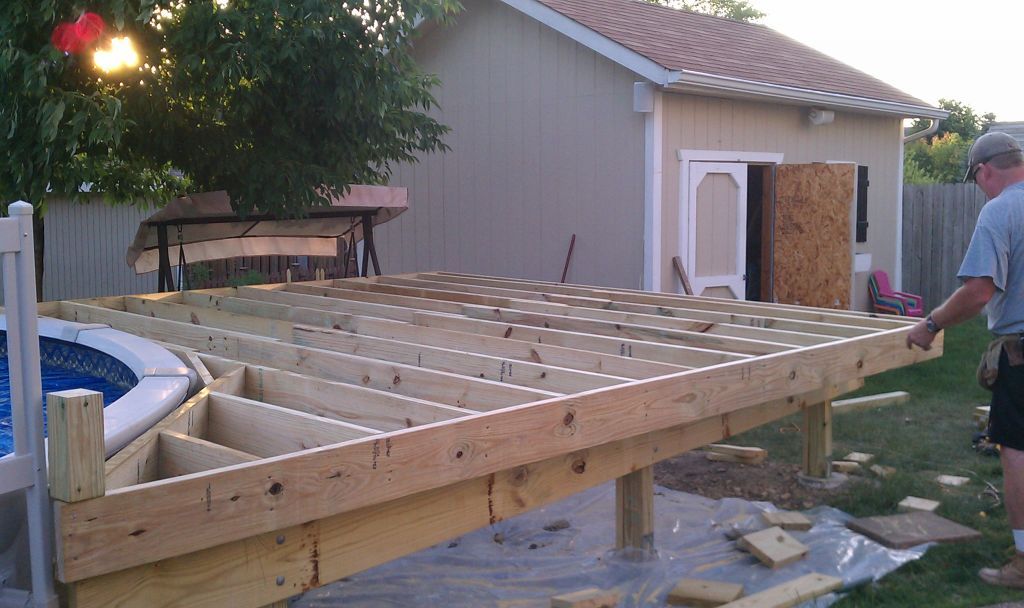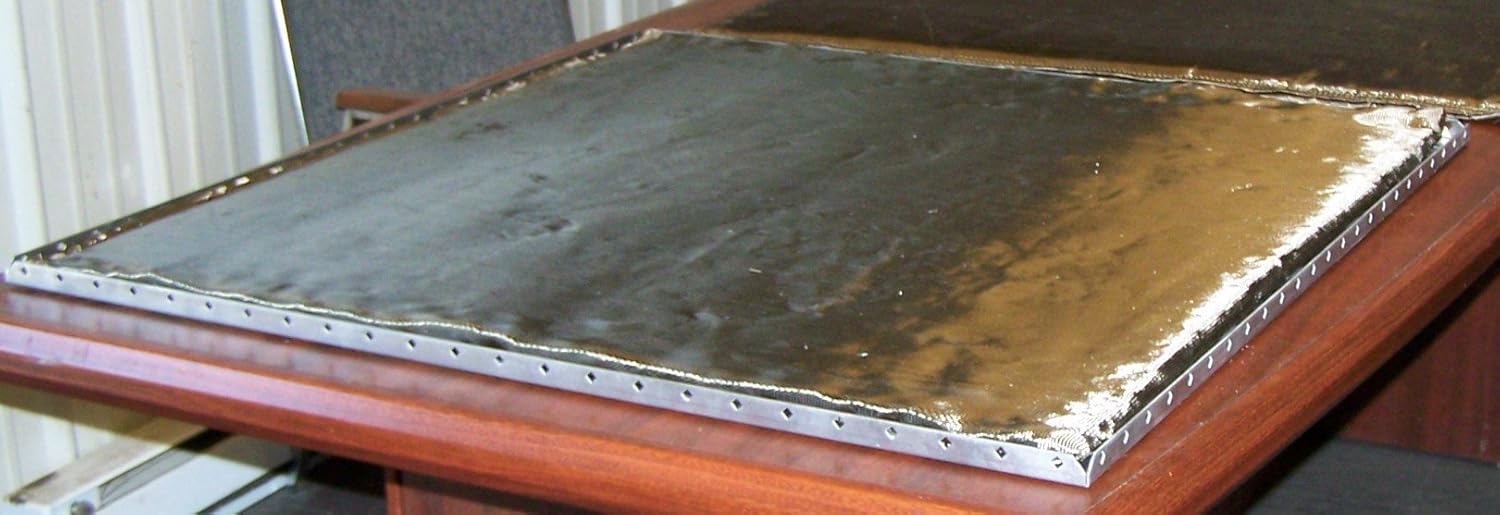In architecture, a deck is a flat surface capable of supporting weight, similar to a floor, but typically constructed outdoors, often elevated from the ground, and usually connected to a building. The term is a generalization of decks as found on ships.

Functions and materials
Wood or timber "decking" can be used in a number of ways: as part of garden landscaping, to extend living areas of houses, and as an alternative to stone based features such as patios. Decks are made from treated lumber, composite lumber, composite material, Aluminum, Western red cedar, teak, mahogany, ipê and other hardwoods and recycled planks made from high-density polyethylene (HDPE), polystyrene (PS) and PET plastic as well as mixed plastics and wood fiber (often called "composite" lumber). Artificial decking products are often called "wood-plastic composites". These days, WPC's have more widely known by different brands like Trex, Azek, Ecornboard etc.
Historically, the softwoods used for decking were logged from old growth forests. These include Atlantic white cedar, redwood and Western red cedar (redcedar). Atlantic City built the first coastal boardwalk in the United States, originally constructed of Atlantic white cedar. However, it was not long before the commercial logging of this tree and clearing of cedar swamps in New Jersey caused a decline in the availability of decking. Atlantic City and New York City both switched to Western red cedar. By the 1960s, Western red cedar from the US was declining due to over-logging. More expensive Western red cedar was available from western Canada (British Columbia) but by then, pressure treated pine had become available.
But even with chemical treatments (such as chromated copper arsenate or CCA), pine decking is not as durable as cedars in an outdoor environment. Thus, many municipalities and homeowners are turning to hardwoods. Decks are often built from pressure treated wood. Pressure treated wood is long lasting and holds up to wet and icey weather conditions. Pressure treated wood however is treated with chemicals which have been known to be toxic.
Generally, hardwoods used for decking come from tropical forests. Much of the logging taking place to produce these woods, especially teak, mahogany and ipê, is occurring illegally, as outlined in numerous reports by environmental organizations such as Greenpeace, Friends of the Earth and Rainforest Relief. US tropical wood imports are rising, partly due to the demand for decking.
Due to environmental and durability concerns, composite decking (a mixture of two materials, typically wood pulp and recycled material such as plastic bottles or plastic bags) have appeared on the market. Proponents of composite decking have touted this as a much needed development as this helps to curb logging of trees for new decks. However composite decking has been found to contain harmful chemicals, cannot be refurbished, and despite claims from decking companies, the composite deck still attracts molding.
Residential decks may contain spaces for BBQing, dining and seating. BBQ areas ideally should be situated near the patio door while out of the way from general foot traffic. Dining spaces will include patio tables, for a typical 6 person outdoor patio table building an area of 12' x 16' is ideal. If deck space is available, homeowners may choose to include a seating area for outdoor couches and benches.
Building A Deck Around A Pool Video
Construction
The deck of a house is generally a wooden platform built above the ground and connected to the main building. It is generally enclosed by a railing for safety. Access may be from the house through doors and from the ground via a stairway. Residential decks can be constructed over steep areas or rough ground that is otherwise unusable. Decks can also be covered by a canopy or pergola to control sunlight. Deck designs can be found in numerous books, do-it-yourself magazines and web sites, and from the USDA.
Larger buildings may also have decks on the upper floors of the building which may be open to the public as observation decks or a Skyrise greenery.
A deck is also the surface used to construct a boardwalk over sand on barrier islands.
Laying deck or throwing deck refers to the act of placing and bolting down cold-formed steel beneath roofing and concrete floors. This is usually done by an ironworker, sometimes in conjunction with a cement mason or carpenter. It regarded as one of the most physically demanding jobs in the iron working industry.
In the UK the various ban on smoking in public buildings was expected lead to an increase in the use of timber decking for outdoor spaces where smokers can gather.
In multi-story commercial construction, the dominant form of deck (including roof deck) construction is composite steel deck

Roof deck
Roof deck is a common term used in urban areas referring to deck structures built on top of existing building roofs. These spaces can be found on both commercial and residential buildings and are often utilized as urban landscape areas. With this trend in outdoor living increasing, many landscape architecture firms have begun to specialize in the design and construction of these specialized spaces. Ex. Chicago Roof Deck.

Observation deck
Are You Looking for Products
Here some products related to "Deck (building)".
Amazon.com : Boedika 9017..
Amazon.com : Cool Area Sq..
FlexDeck Interlocking Dec..
Amazon.com : Deck Protect..
Get these at Amazon.com* amzn.to is official short URL for Amazon.com, provided by Bitly
Source of the article : here






EmoticonEmoticon